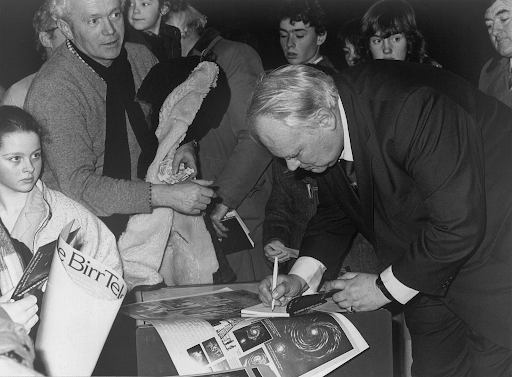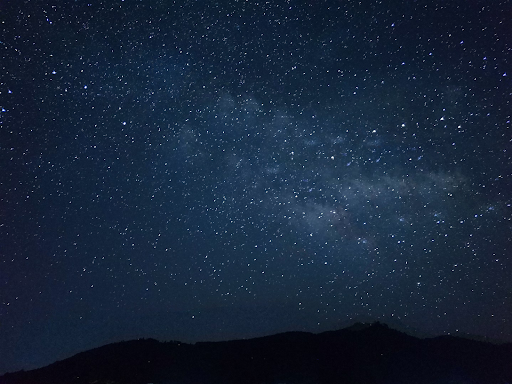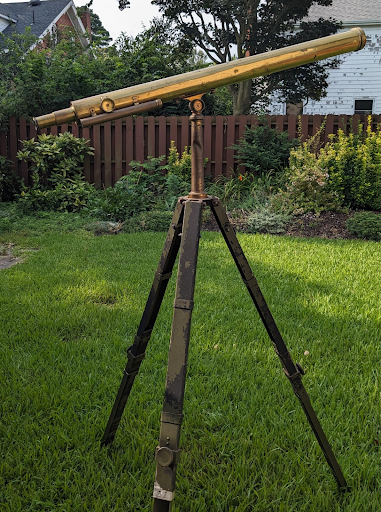By John Adam
As a young boy growing up in the English countryside, I never paid much attention to nature. Then, around the age of 12, I developed a passion for astronomy, sparked by the amateur astronomer, Patrick Moore, who hosted a BBC TV show called “The Sky At Night.” He even had his own little observatory in his garden in Sussex. I wrote to tell him that I had decided to become an astronomer! He graciously responded to my letters, and was so encouraging. When I was 16, he invited me and my parents to visit him in Northern Ireland, where he was Director of the Armagh Observatory. By that time I had read everything about astronomy that I could get my hands on, starting with my all-time favorite, The Observer’s Book of Astronomy, by, yes, this same Patrick Moore. (He later became Sir Patrick, knighted by Queen Elizabeth II.) I bought it with my pocket money. It was small but packed with information about the solar system and constellations and the stars that comprised them. Much of what I remember about stellar magnitudes, spectral types and distances came from that little book. Sadly, and I know not how, it was lost many decades ago…

My parents were supportive of my aspirations to become an astronomer, but my father, being a farm-worker, had a meager weekly income. Not much money available to support my astronomy habit. They did have a small insurance policy on my life, which they cashed in for about the equivalent of $50. With this I bought a beautiful (but somewhat dented) old brass-tubed telescope: a 3-inch refractor with an Army-surplus tripod that I have to this day. Both the telescope and its owner are rather the worse for wear six decades later. I spent many evening hours outside with it, observing the sky which, all too often, was cloudy – this was England, after all.
That set my career path, or so I thought. I had just started what we call in England “Secondary School”, which covers the age range 11 to 18. At Henley-on-Thames Grammar School we were all “streamed” into three different ability groups. Being something of a “plodder”, I was placed in the middle group. I remember my algebra teacher, Mr. Archibald Chanter, asking us all what we wanted to be “when we grew up.” When “Arch” reached me, I said proudly, “An astronomer, sir.” A rather worried look crossed his face. He frowned and said, “But Adam, astronomers need to know an awful lot of mathematics, and you are very near the bottom of the class in this subject.” That was something of a turning point for me. I had two choices: to get discouraged and give up, or to rise to the challenge and “work my tail off” to learn the needed mathematics. Providentially, I chose the latter. I think Arch believed he was just being realistic, genuinely concerned that I didn't have the smarts to be an astronomer, even though I had the telescope.
Things didn’t exactly change overnight. I buckled down and persevered throughout the next six or seven years, sometimes spending whole weekends on my math homework. Several years later another mathematics teacher wrote, in a report to be sent to my potential universities, that “by dint of sheer hard work, Adam is sometimes able to achieve far more than his brighter peers.” And that was the secret: plod, plod, plod on my part, along with the blessing of having very supportive parents.
While some of those “brighter peers” were “trained up” for Oxford and Cambridge, the rest of us simply applied elsewhere. In the process of gaining my PhD in theoretical astrophysics from the University of London, I became so enamored of “applied mathematics” (in the British tradition) that I resolved to become a professor of applied mathematics. Subsequent to gaining my PhD I had two postdoctoral appointments; one in theoretical astronomy at the University of Sussex and the second in applied mathematics at the University of St. Andrews. These were followed by a mathematics faculty position in Northern Ireland (at what is now the University of Ulster), and then the offer of a full professorship at Old Dominion University, where I am now a professor emeritus.
Serendipity (or providence or however you wish to describe it) was evident throughout (at least in retrospect). Someone hearing a talk I gave at a conference recommended me for the position in Ulster. Then a friend at the University of Rochester, NY, suggested that I inquire about a mathematics position at Old Dominion. To cut a long story short, I was appointed as a full professor there in 1984. Nearly three decades after that I had the privilege and joy of dedicating my first book to (at that time) my mother and the memory of my father. And frequently I read the “Astronomer's Psalms” – Psalm 8 and Psalm 19 – which remind me of the awe I felt, and still do, when I look up on a clear starry night.

One last dose of serendipity: On January 4th, 2023, in Beaufort, South Carolina, it was pouring rain, so I ducked into a second-hand bookshop. There I found a copy of The Observer's Book of Astronomy, which had launched me on my academic trajectory so long ago. What a wonderful find — and only $7 too!
References

Dr. John A. Adam was Professor of Mathematics at Old Dominion University (Norfolk, Virginia) from 1984 until he retired in June 2024. He recovered from a heart attack and open-heart surgery in his mid-forties, which sparked in him the urge to observe the rest of nature for perhaps the first time. This led to publication of his first book, Mathematics in Nature — Modeling Patterns in the Natural World, in 2003. An updated edition should appear in the not-too-distant future.
